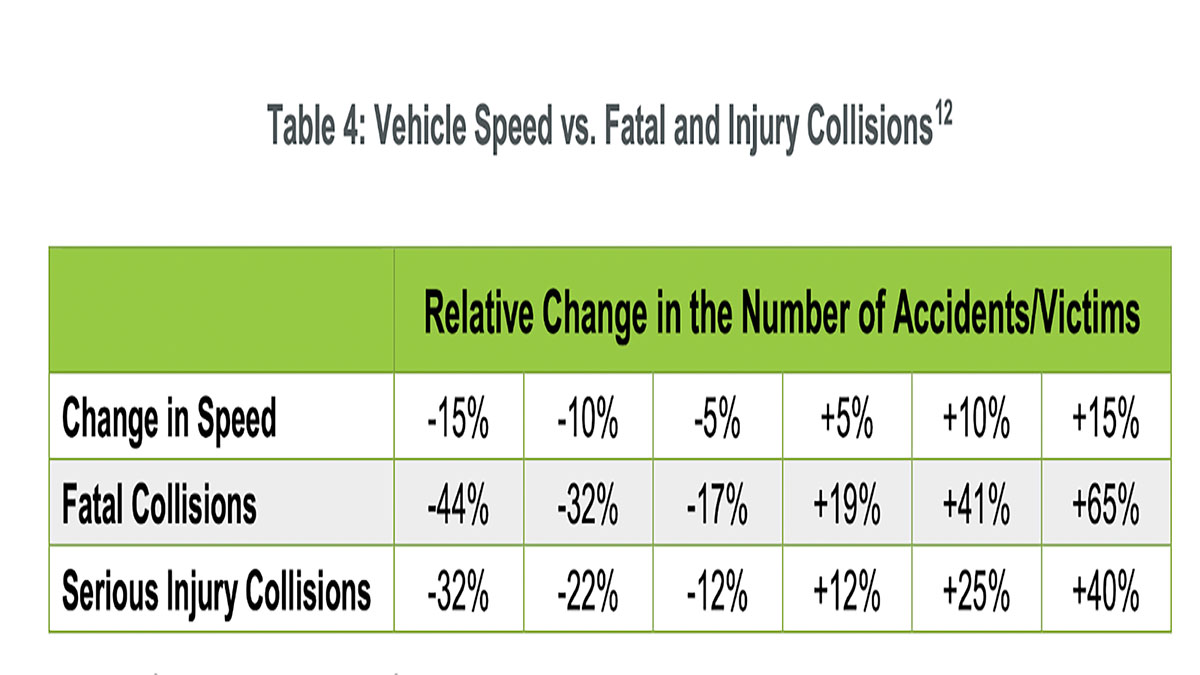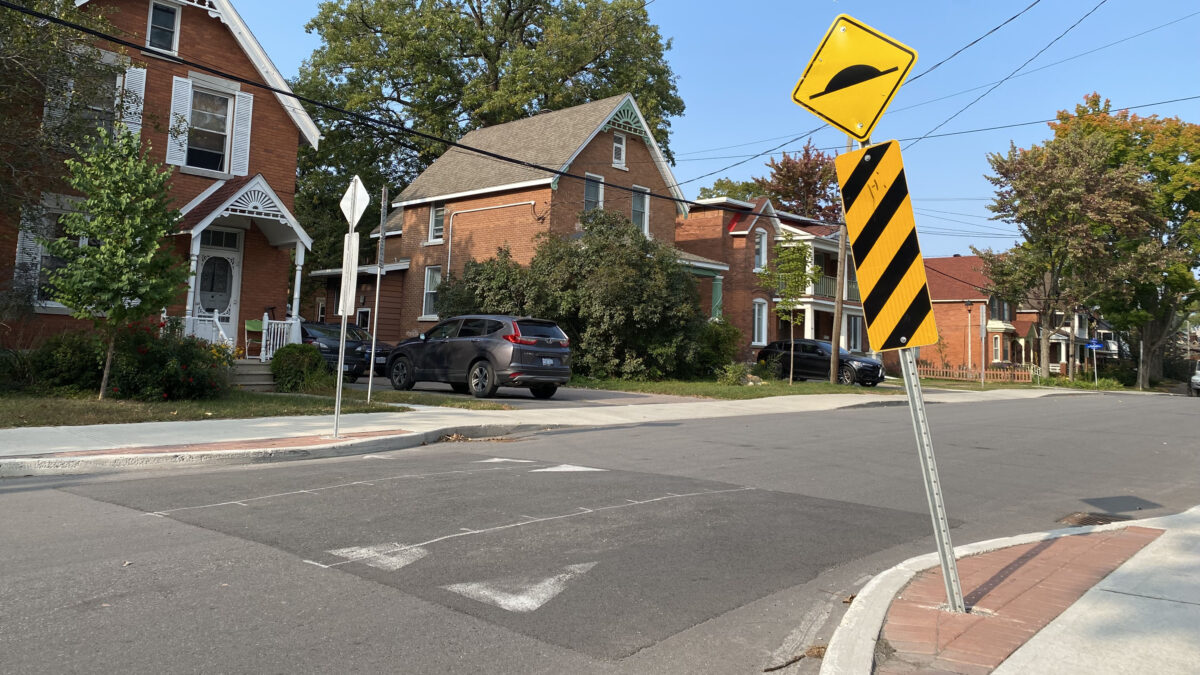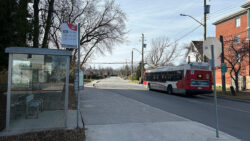Many Ottawa drivers will be familiar with traffic-calming measures, such as squeezing between upright posts as you drive along a road like Riverdale Avenue in Old Ottawa South. It can be tight and often feels like your vehicle won’t be able to wriggle through.
According to the Traffic Calming Design Guidelines for the City of Ottawa, the posts are one example of a group of physical deterrents designed for “mitigating negative impacts of motor traffic on existing streets, such as high travel speeds or volume.”
“I would say in the last three years [the number of traffic-calming measures] have noticeably increased,” said Kristine Dobson, an Ottawa South resident.
These and other measures will increase in coming years with one main objective: reducing vehicle speed.
Bellwood Avenue, where Dobson lives, had a pinch point and speed bump installed recently. There are additional plans to build a raised intersection at Belmont Avenue and Bellwood Avenue just down the street from Dobson’s home.
The city’s Road Safety Action Plan will expire after 2024, and an assessment of its effectiveness will be necessary. Today, traffic-calming measures are the most visible aspect of this plan. While the measures cost money, their value is being felt within communities.
“Traffic calming is something that we support because it slows down traffic, and anything that slows down traffic makes the road safer,” said Sue Neill, chair of the Old Ottawa South traffic and safety committee.
“One of the key variables when you have vehicles involved in collisions is speed,” said Prof. Christina Bouchard, who teaches public management at the University of Ottawa. For Bouchard, speed management is always contending with “the notion that in order for a road network to function for cars … the cars need to move at a certain speed.”
By reducing speed, Ottawa’s Neighbourhood Traffic Calming Program sacrifices efficiency on local roads — where it is not necessarily needed — to increase safety.


According to the data, speed reductions can lead to a significant reduction in fatal and serious-injury collisions. For instance, a 15 per cent reduction in speed can lead to a 44 per cent reduction in fatal collisions. The converse is true with percentage increase in speed and rising numbers of serious and fatal collisions.
In 2019, there were 16,437 collisions, according to City of Ottawa data. Of those, 106 resulted in “major” injuries and 25 fatalities. (The number of collisions dropped during the pandemic because of lockdowns, virtual work and other measures.)
The action plan aims to achieve a change in driving culture “implement the change in culture “required to continue the progress towards zero fatalities and major
injuries.”
But the changes aren’t cheap. In 2023, the city allotted $62,500 for temporary traffic calming measures per ward. This represents a $12,500 increase from 2022. In the coming years it is expected that the budget will continue to rise incrementally by $12,500 a year until each of the city’s 24 wards ultimately receives $100,000.
“I think [traffic-calming measures] are good for traffic. I think they slow down traffic and create the overall sense that traffic should be slower,” said Dobson. “I am not sure about the return on investment. I don’t know if you can put a price on safety, but I am not always sure they are implemented effectively, where cost is concerned.”
Permanent traffic-calming installations such as bulbing out sidewalks to narrow streets, speed bumps and sidewalk reconstruction, tend to be expensive.
“The cost of a project can range significantly depending on the objectives, the length of the corridor and other complete street elements are included in the overall traffic calming plan,” said the City of Ottawa in a written statement.
Depending on location, the price can range from tens of thousands to hundreds of thousands.
For example, a planned project along Southmore Drive East includes four speed cushions and raising the existing crosswalk across Southmore Drive East at Walkley Road along with other small modifications. The estimated total for the project is $615,000.
Similarly, the proposed installation on Halton Terrace involves four sets of speed cushions and two type B pedestrian crosswalks. These traffic-calming measures have an estimated cost of $320,000. The sidewalk construction that accompanies the project carries a $900,000 price tag.
Temporary traffic-calming measures including signage, speed display devices and flexible centre-line signage are cheaper and benefit from being easily installed or modified. However, many of these methods pose fewer physical restrictions, which means they may be less effective at speed management.
One of the reasons the costs tend to be high is that implementation follows a reactive process. Community members have to reach out before the implementation process can begin. This means reworking existing infrastructure to suit current needs.
UOttawa’s Bouchard says safer streets are well worth the investment.
“There’s quite a number of different ways you can address cost benefit thinking when it comes to traffic safety,” she said. Generally, what studies find is “that investments in road safety, collision reduction and death reduction are a good investment.”





The traffic calming budget is absolutely paltry compared to a single road widening or resurfacing project. Please have some perspective, we need more funding to make roads safer.